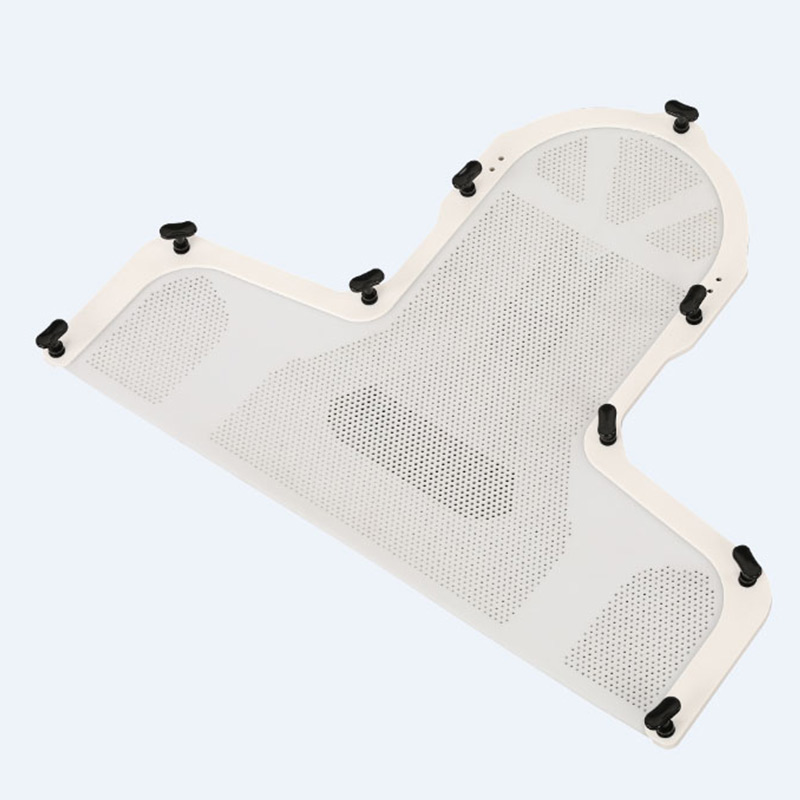Views: 0 Author: Site Editor Publish Time: 2025-02-14 Origin: Site

When it comes to respiratory protection, choosing the right mask is crucial for safety and effectiveness. Among the most commonly used materials for respirators are thermoplastic and silicone. Understanding the differences between these two types of respirators helps individuals make informed decisions about their suitability for various applications. In medical settings, thermoplastic masks play a significant role, particularly in radiation therapy, where radiotherapy masks and radiotherapy thermoplastic masks are essential for patient immobilization. This article will explore the distinctions between thermoplastic masks and silicone respirators, providing insights into their applications, advantages, and limitations.
A thermoplastic mask is a type of mask made from a heat-sensitive plastic material that becomes flexible when heated and hardens upon cooling. This feature makes it a highly adaptable solution for medical and industrial applications.
Heat-Activated Molding: Can be reshaped when heated and solidified upon cooling.
Customized Fit: Used in medical applications, such as radiotherapy thermoplastic masks, to immobilize patients during treatment.
Durability and Lightweight: Provides stability while remaining easy to handle.
| Application | Purpose |
|---|---|
| Radiotherapy Mask | Used in cancer treatment to keep patients immobilized for precise radiation targeting. |
| Medical Respirators | Provides protection against airborne contaminants in healthcare settings. |
| Industrial Protection | Used in certain industries for chemical and dust filtration. |
Silicone respirators are flexible, soft masks designed for respiratory protection, often used in hazardous environments to filter out harmful substances.
Soft and Flexible: Provides a comfortable and secure fit.
Long-Lasting Material: More durable than thermoplastic masks, resistant to wear and tear.
Replaceable Filters: Often designed with changeable filter cartridges for extended use.
| Application | Purpose |
| Industrial Respiratory Protection | Filters out hazardous chemicals, dust, and fumes. |
| Medical Use | Some silicone masks are used for oxygen delivery or surgical procedures. |
| Construction and Manufacturing | Provides protection against airborne particulates and gases. |
While both thermoplastic masks and silicone respirators serve protective functions, their differences make them suitable for specific use cases.
| Feature | Thermoplastic Mask | Silicone Respirator |
| Material | Heat-sensitive plastic | Soft, flexible silicone |
| Customization | Molded for precise fit | Adjustable for general use |
| Durability | Moderate, with re-molding capability | High, resistant to damage |
| Comfort | Snug fit but can feel rigid | Soft and more comfortable for extended wear |
| Protection Level | Immobilization and basic filtration | Advanced filtration for hazardous environments |
A radiotherapy mask is a specialized thermoplastic mask used in cancer treatment to keep a patient's head, neck, or upper body still during radiation sessions. This ensures accurate radiation delivery while protecting surrounding healthy tissues.
Molded Fit: Custom-fitted to each patient.
Lightweight Yet Rigid: Provides stability during treatment.
Breathable Design: Allows patients to breathe comfortably while remaining still.
A thermoplastic mask is a heat-sensitive plastic device used in medical and industrial settings. It is particularly essential in radiotherapy thermoplastic masks, which help immobilize patients during cancer treatment.
A radiotherapy mask ensures that radiation therapy is precisely targeted by keeping the patient still, reducing movement-related inaccuracies.
Radiation-protective masks include radiotherapy masks for patient immobilization and lead-lined masks for shielding against radiation exposure.
A thermoplastic mask is heat-moldable and used mainly for medical immobilization, while a silicone respirator is a soft, reusable mask designed for respiratory protection in hazardous environments.
Both thermoplastic masks and silicone respirators serve unique functions in different fields. Thermoplastic masks, particularly radiotherapy thermoplastic masks, are crucial in medical treatments, while silicone respirators provide effective respiratory protection. Understanding their differences helps in selecting the right mask for specific needs, whether for medical applications or industrial safety.
Most patients spend about 30 to 60 minutes on a CT simulation, with some sessions taking up to 90 minutes for complex cases. The process remains straightforward and centers on patient comfort. CT simulation serves as a crucial step before radiation therapy. Staff use advanced equipment and clear instructions to help patients feel at ease throughout the session.
Thermoplastic splints have become increasingly popular in the medical field due to their versatility and effectiveness in treating a wide range of conditions. In this article, we will explore the various uses and benefits of thermoplastic splints, shedding light on how they can aid in the recovery p
IntroductionRadiotherapy is a crucial treatment for many types of cancer, utilizing high-energy radiation to target and destroy cancer cells. During treatment, precision is key to ensuring that the radiation is directed at the tumor while minimizing exposure to surrounding healthy tissues. This is w
Have you ever wondered how doctors plan precise cancer treatments? CT simulation plays a critical role in radiation therapy by creating detailed 3D images of the body. This advanced technology ensures that radiation is delivered accurately to target tumors, minimizing damage to surrounding healthy tissue.
CT Simulation is a crucial step in radiation therapy. It ensures accurate treatment by mapping the precise location of cancer cells. Without proper preparation, the accuracy of radiation delivery can be compromised, which could affect the treatment's effectiveness.